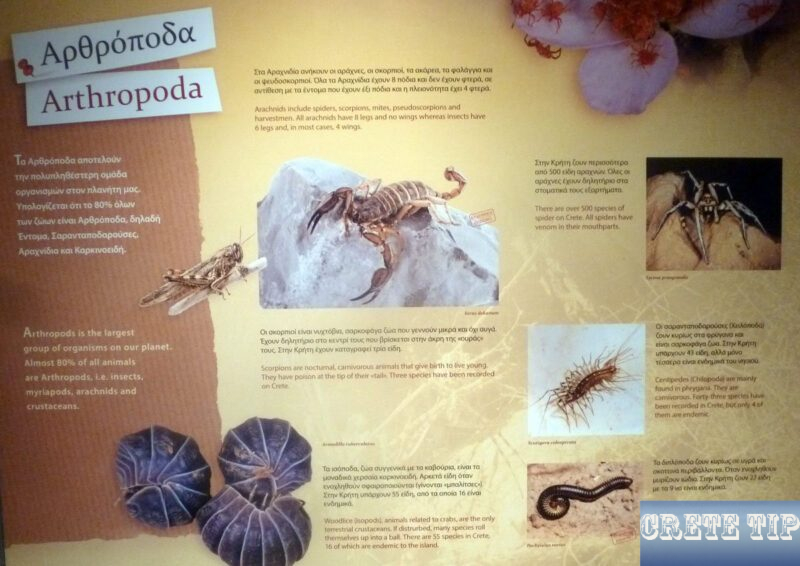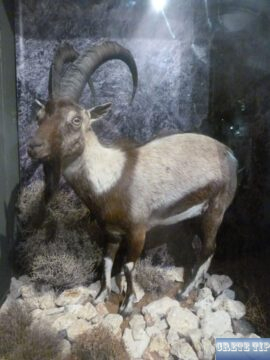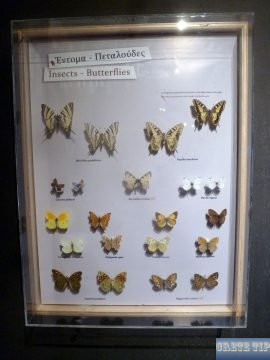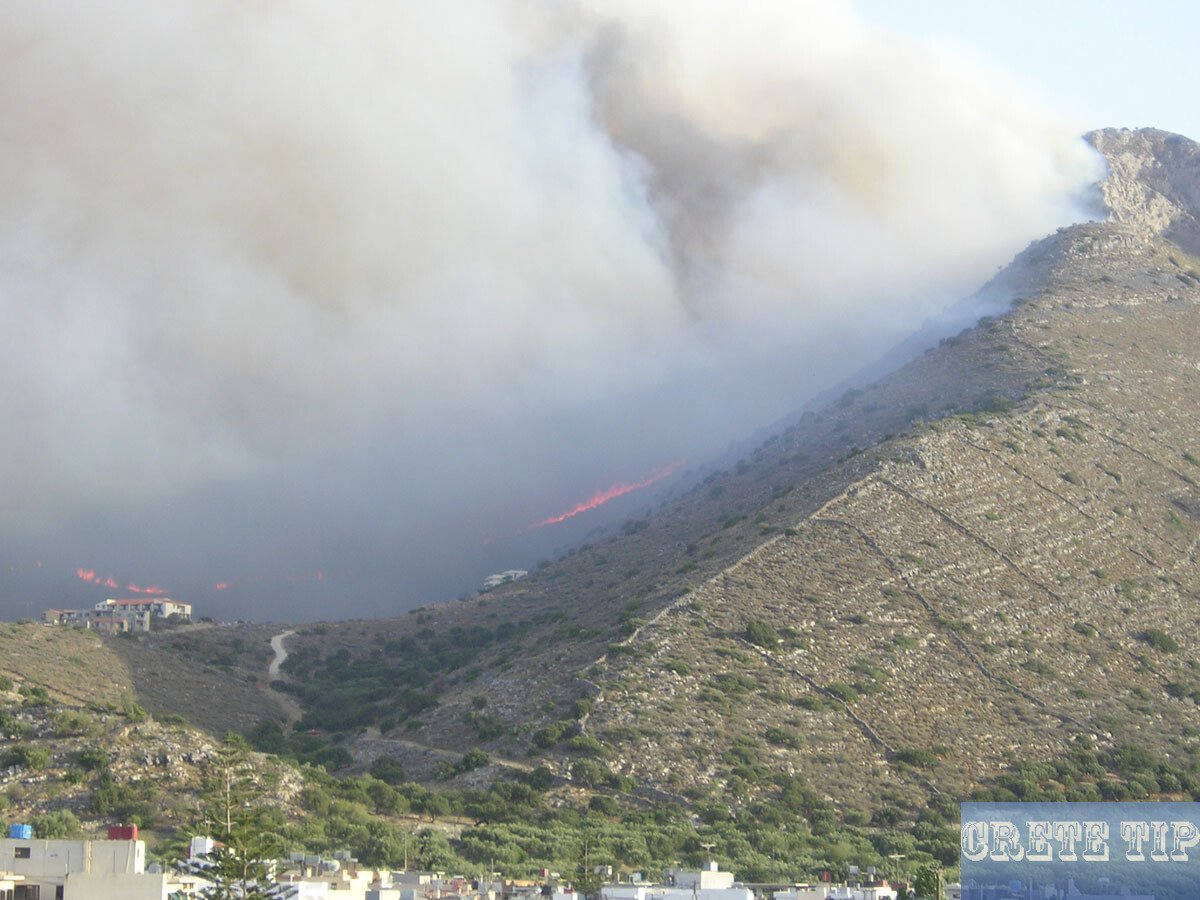Wildlife in Crete.
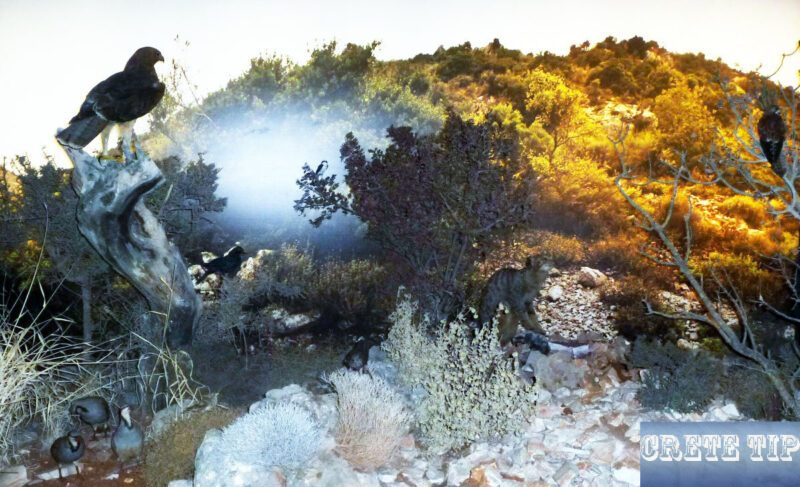
Mammals, reptiles and amphibians, insects and arthropods of Crete.
Wildlife on Crete
Mammals
Cretan mammals are hard to find, usually nocturnal and very rarely seen. Islands usually have fewer species than the mainland, and Crete is no exception: there are only about half as many species as on mainland Greece.
Even such common and everyday animals as the red squirrel or the fox have never made it across the sea. That’s why you won’t find large and interesting mammals like wolves or lynxes in the Cretan mountains, which can sometimes be found on the mainland.
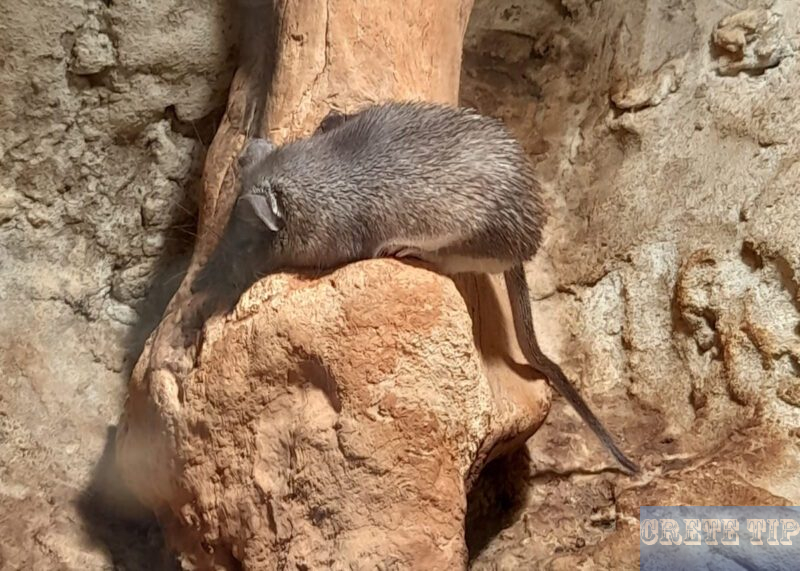
However, there are one or two compensations for this, as islands often have their own endemic species. One of these is the Cretan spiny mouse, which is found nowhere else in the world. If you are on a rocky hill at dusk, you can see this large mouse with very big ears and a spiny back rummaging around.
There are also fourteen species of bats on Crete, as well as weasels, badgers, hares, hedgehogs, field mice, shrews and stone martens.
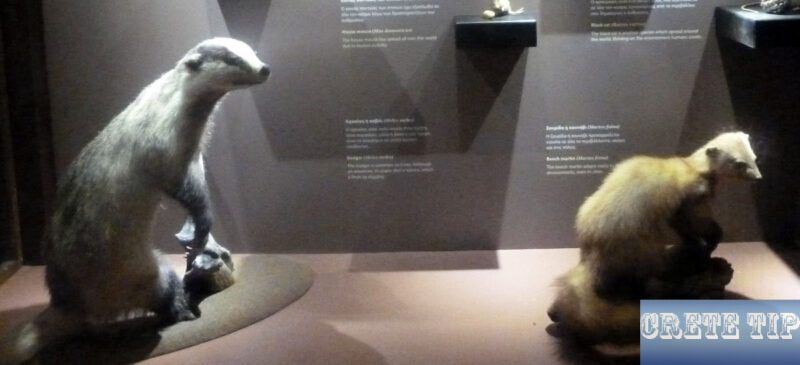
If badgers feel threatened, for example by entering a remote mountain cave with their offspring, they can harm a human. However, badgers are rare and live in secluded areas, far away from human settlements.
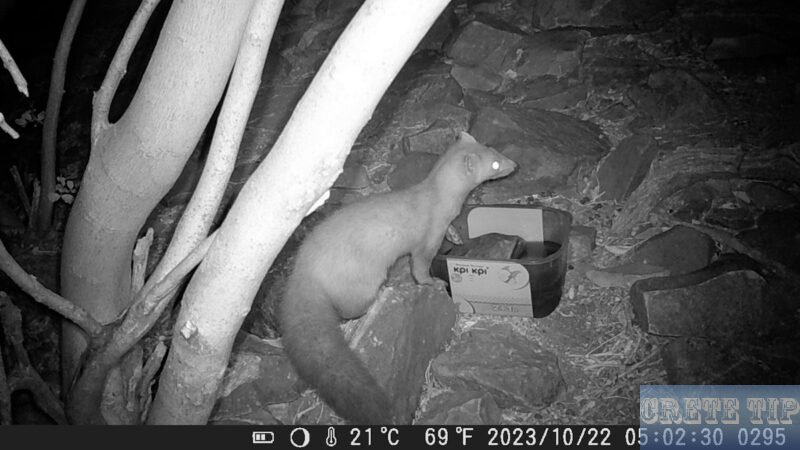
There are several marine mammals in the sea around Crete that can occasionally be spotted in offshore waters. The endangered and extremely rare Mediterranean monk seal breeds in some sea caves around the island.
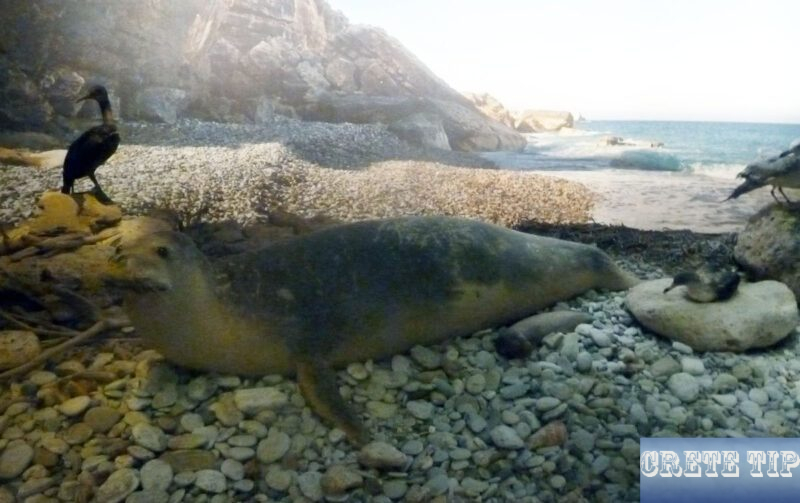
The deep waters off the south coast of Chania have recently become known for a population of sperm whales.
Dolphins – which already thrilled the Minoans – can be seen everywhere from the island, but you are most likely to get a glimpse of them when you are on a boat or ferry.
A recent zoological discovery in 1996 was the rediscovery of the Cretan wild cat, long thought to be extinct or a mythical creature. Only one specimen has ever been captured alive, and the population status of the animal is still unknown.
Cretan wildcat
In Crete, there have long been legends and myths about fourikattos, the ‘angry cats’, which are mountain wild cats.
Although in 1905 the participant of a British scientific expedition had acquired two skins of such a beast at the market in Chania, the existence of such a creature was considered improbable among scientists for most of the last century. They also doubted the stories of sheep and goat herders who claimed to have seen such a wildcat.
In 1996, however, an Italian university team studied the predators in the Cretan mountains. When they inspected their traps one morning, they were astonished to discover that they had caught a 12.13 lb (5 1/2 Kg) wildcat.
This report caused quite a stir, as the animal was brought to the University of Crete for study before being released back into the wild equipped with a radio-tracking device.
The tawny cat with the small lynx-like tufts does not belong to the subspecies of cats in mainland Greece or the rest of Europe. Its closest relative is a species that lives in North Africa and Sardinia. Scientists believe that it is an extremely shy and nocturnal animal, which explains why it is so rarely seen.
The discovery of the animal has not only proved generations of Cretans right, but has also turned the island’s zoological history on its head. Recent research has detected more wild cats, but there are serious concerns for their future as their natural environment is being affected by development.
Scientists are now puzzling over how the animal came to Crete in the first place – was the cat perhaps brought by Minoan ancestors as a domesticated animal, or has it been on Crete since the island was separated from the mainland ?
Reptiles and amphibians

The hot, rocky terrain of Crete is well suited to reptiles, as there is plenty of sunshine and rocks for them to hide under. However, the natural isolation of the island has limited the number of species present to less than a third of those found on mainland Greece.
Seeing some of them, however, is quite easy. If you sit on a stone wall anywhere in the west of the island and observe, you will almost certainly see the small local wall lizard, the Erhard’s wall lizard.
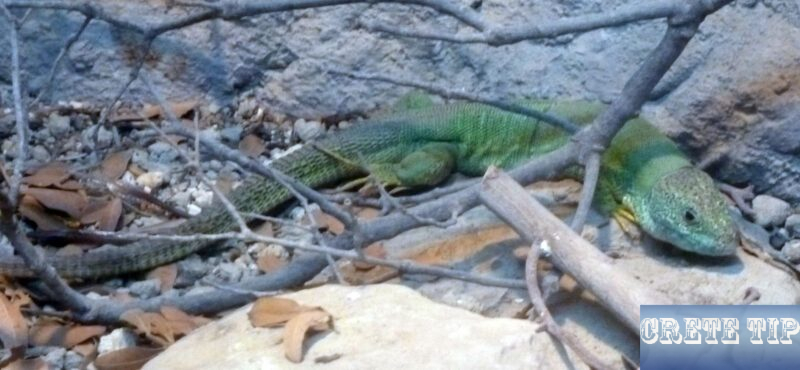
A rustle in the rocks by the roadside could be a spotted ocellated skink. This looks a bit like a lizard, but with a thicker body and a stockier neck.
In the bushes of the maquis and phrigana you can see the Balkan green lizard, a truly magnificent bright green animal up to 20 inch (50 cm) long, of which usually only the tail is visible as it runs on its hind legs from one bush to another.
At night, geckos replace the lizards. Geckos are small (less than 4 inch or 10 centimetres), have large eyes and round adhesive pads on their toes that allow them to walk upside down on the ceiling.
They sometimes enter houses, where they are mostly welcome apart from cats and dogs, as they keep mosquitoes and other biting insects away. Three out of four European species are found on Crete.
The island is also one of the few places where the chameleon occurs in Europe, although it is extremely rare and there are only a few known specimens. However, this could also be due to its ability to camouflage effectively.
It lives in bushes and low trees and hunts during the day. Its basic colours are greenish, but can naturally adapt to the background and therefore vary.
From the species of turtles, only the striped necked terrapin occurs naturally on Crete. They are mainly found in habitats with sufficient fresh water, for example in Lake Kournas and the bird sanctuary of Ayia. They are even found in the cisterns of the Palace of Zakros.
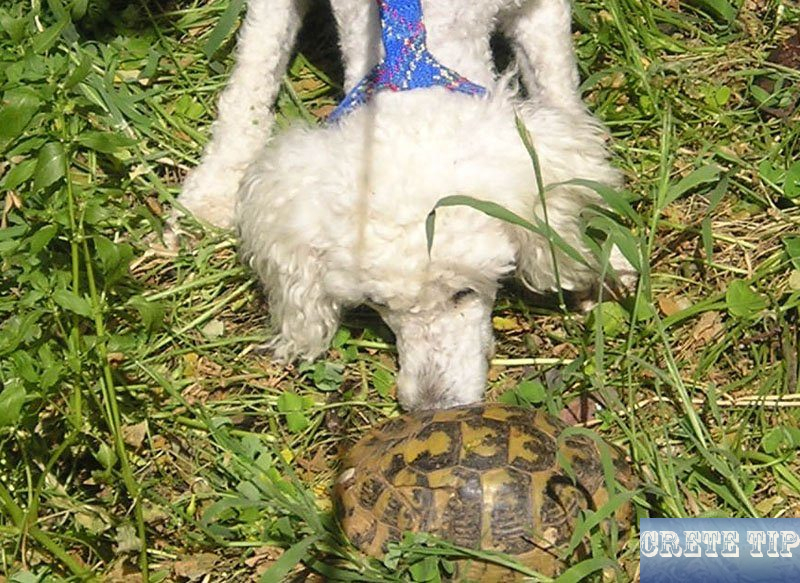
There are also sea turtles in the Mediterranean Sea, which, with a bit of luck, can be seen swimming or sunbathing on the surface of the water from a boat. They are mostly loggerhead turtles, which can grow up to one metre in length.
In Crete, there are significant breeding populations of the animals on the beaches west of Chania, around Matala and the largest with more than 350 nests near Rethymno.
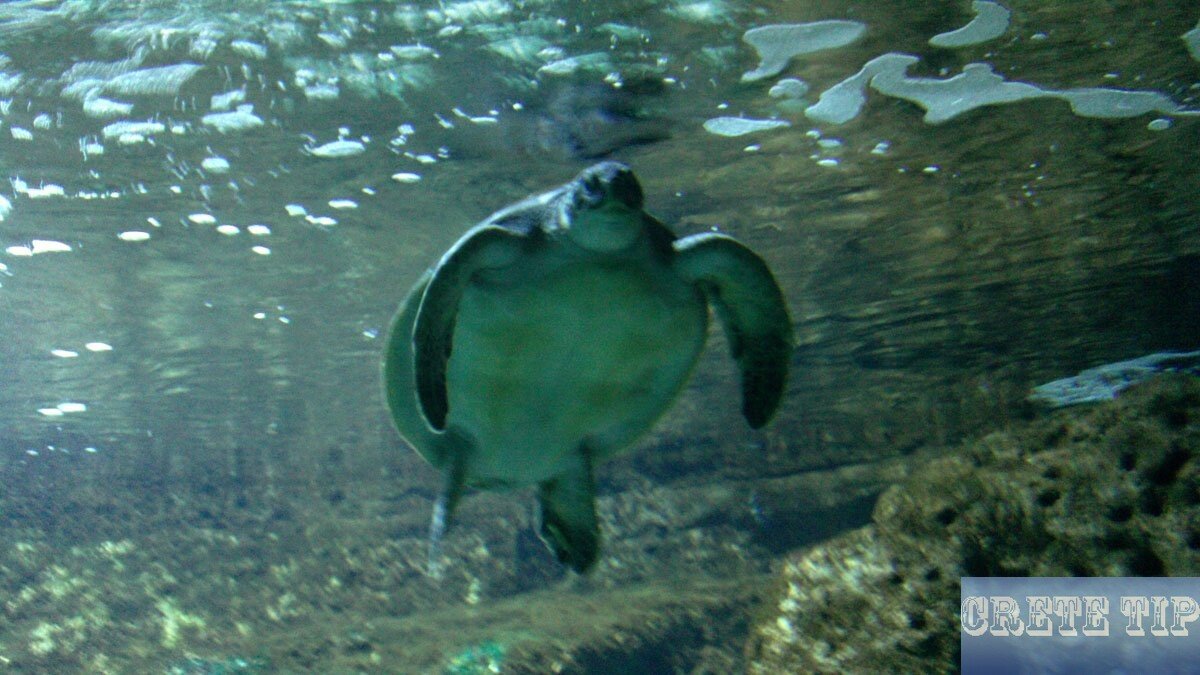
However, the developments associated with tourism threaten their survival. Every year, many turtles are injured by motorboats, their nests are destroyed by quad bikes, motorbikes and jeeps, and the newly hatched hatchlings on the beaches get caught in deck chairs and umbrellas that are still on the sand at night. In addition, the turtles are easily frightened by noise and light, making wild camping, mobile homes and discos nearby unwelcome roommates for them.
The Greek government has passed laws to protect loggerhead turtles, and the Sea Turtle Protection Society of Greece now runs an ambitious conservation programme, but often local economic interests prefer a beach full of dead animals to a sea full of turtles.
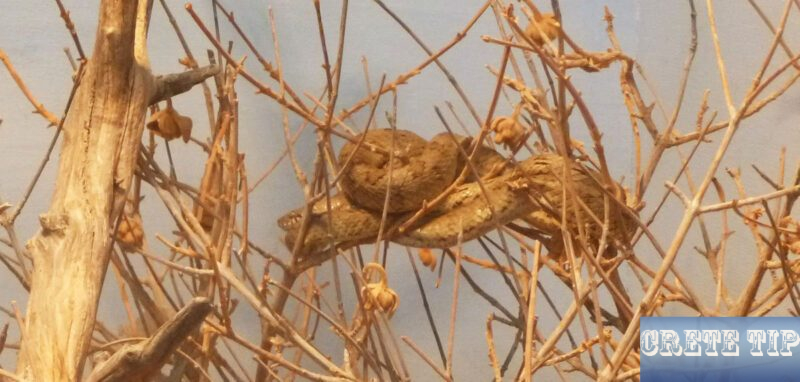
The last group of reptiles are the snakes, which are represented by four species, of which only one is poisonous – the cat snake. It is nocturnal and has only fangs, so it is extremely unlikely that it will bite a human and cause its weak venom to take effect, so there is no need to worry unduly when walking in the hills. Besides, most snakes are very shy anyway and are easily frightened.
One species to look out for is the beautiful leopard snake, which is grey and has red spots with black edges. It likes to bask on the sides of roads and paths.
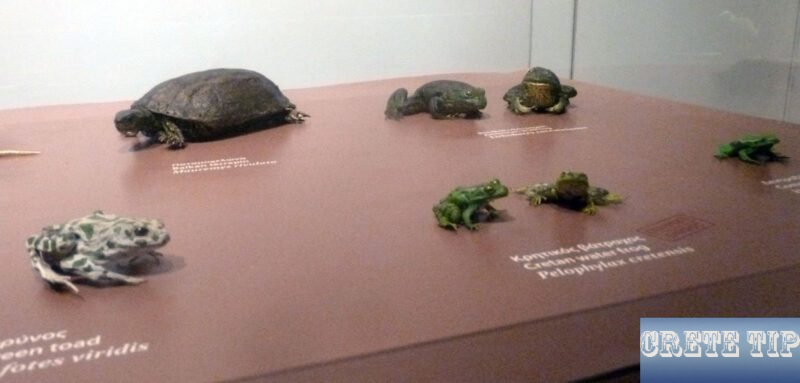
Only three species of amphibians are found on Crete. The green toad is smaller than the common toad and has a striking green-grey marbled back.
The marsh frog is a large specimen of its genus and is mainly greenish, but variable in colour and very noisy in spring. In contrast, the tree frogs are small, live in trees on Crete and croak around very loudly at night.
Insects
There are about a million different species of insects in the world, and also on Crete there are probably a few hundred that have not yet been scientifically described or registered. The most unpleasant of these are the Mosquitoes on Crete.
About a third of all insect species on the island are beetles, and wherever you go you will quickly notice them.
So you can see dung beetles rolling a dung ball along a path, like the mythological Sisyphus.
If you have time to look closely at the bushes and small trees, you may spot a stick insect or a praying mantis. However, these creatures are rarely seen due to their excellent camouflage.
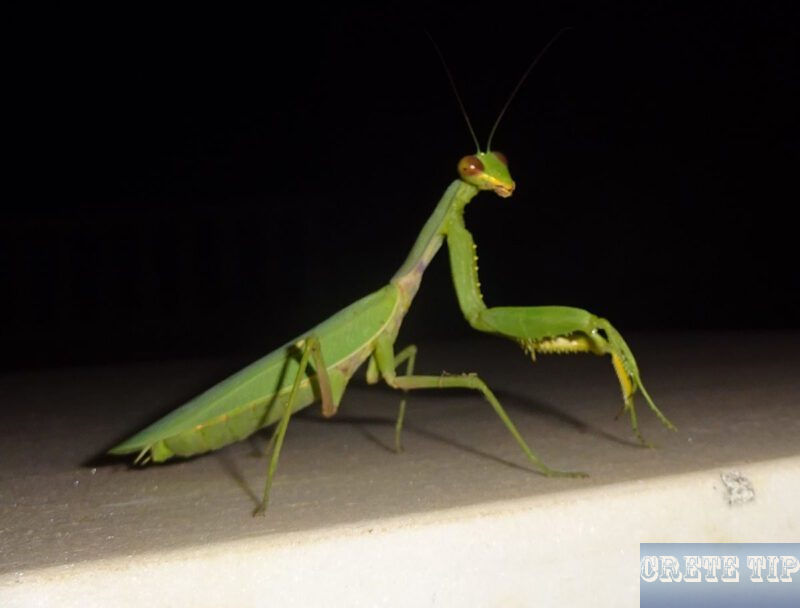
The grasshopper and cricket family is widespread, and most grasslands are home to some of them. Grasshoppers make their chirping sound by rubbing one wing against a leg, while crickets make their chirping sound by rubbing both wings together.
Cicadas, which most people think of as grasshoppers, are actually not related to them at all – they belong more to the large leafhoppers. Their continuous, buzzing call is one of the characteristic sounds of the Mediterranean night and is produced by the rapid vibration of two membranes called tymbals, located on either side of their bodies.
Among the most interesting species of this genus in Crete are two species of swallowtails, which are easily identified by their size, yellow-black colouring and the long extensions on their hind wings.
The Cleopatra is a large, bright yellow butterfly, similar to the brimstone hawk moth of northern Europe, but larger and more colourful.
Look out too for the Cretan Argus, which is chocolate brown in colour and only found in the Psiloritis and Dikti Mountains. However, it is now considered increasingly threatened by human activities.
Arthropods
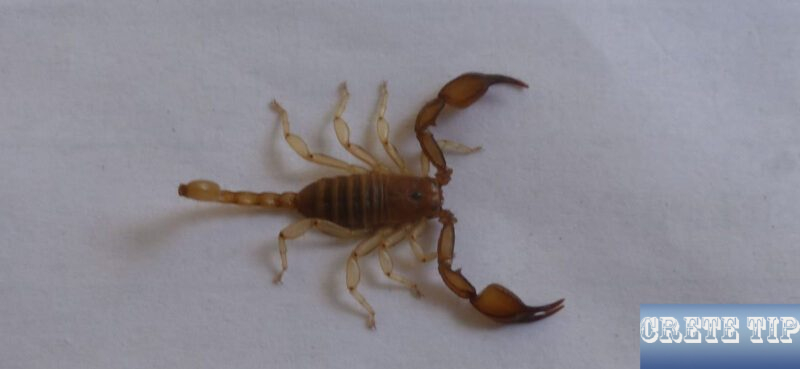
Scorpions belong to the genus of arachnids and several species are found on Crete, but all are generally not life-threatening to people without allergic reactions due to their weak venom.
There are at least three species of scorpions on Crete. Stings are rare but do occur and are very painful. As a precaution, you should consult a doctor or pharmacist, especially if you suffer from a rare allergy to this venom, in which case a sting can be dangerous.
Care should be taken when lifting stones and especially when digging in old piles of wood. They also like to hide in the holes of olive trees and some also like to nest in ground floor flats through open garden doors or windows. Then they also like to hide inside shoes that have been put down somewhere, which is something to look out for before putting them on.
Cretan scorpions are smaller than most tourists expect. Some species, such as the common black Euscorpius Carpathicus and Euscorpius Flavicaudis (Southern European Scorpion), grow to only 1.2-1.6 inch (3-4 cm) long.
Species of the genus Mesobuthus Gibbosus are lighter in colour and much larger and can grow up to 4.75 inch (12 cm) long, which can be quite frightening. Stings from large specimens should be treated by a doctor.
Finally, there are two genera of Iurus doufoureius, which are the most harmless, although a sting can cause pain. They are also more often found inside houses.
The only reports of human injury from spiders in Crete relate to small ‘jumping spiders’ that can bite at night. Their bite can often become infected, so treatment is required. The bite itself is not poisonous and it is obviously not too common, but these spiders can actually jump high and far.
In addition, there are numerous centipedes and millipedes on Crete. The latter in particular should not be frightened or injured, as they then spread a foul-smelling liquid which is supposed to scare off their predators – especially birds. They are also useful creatures that remove pollutants from the soil and if they have strayed into the house, you should put them back outside. When you do this, they curl up in a ball to protect themselves. Like scorpions, they sometimes hide in open shoes, and when you put them on, they get squashed and release their stinky secretions.
